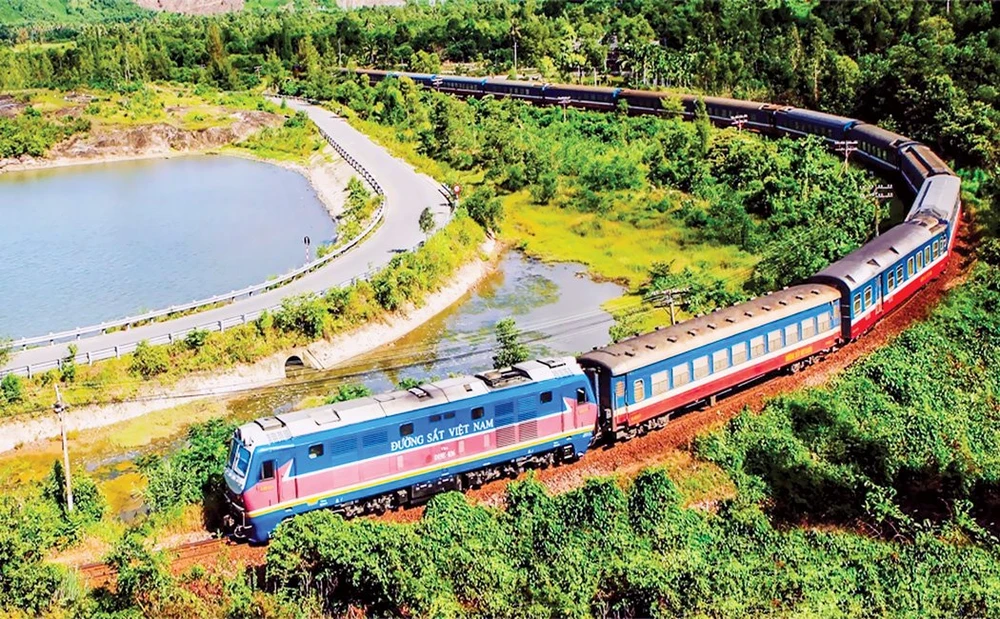
However, mobilizing external capital resources is not easy at all times, especially in the context of controlling public debt within the country.
Urgent need for more capital resources
According to statistics of the Asian Development Bank (ADB), in the next ten years, from now until 2030, many emerging economies in Asia will be compelled to invest upto USD 26,000 billion for infrastructure development. The focus will be more on the transportation system, increasing electricity supply and improving access to potable water as well as better waste and sanitation system.
Although the size of Vietnam’s economy is not large, it remains one of the countries in Asia with the highest investment rate in infrastructure development. Infrastructure investment in Vietnam's public and private sector has reached an average of 5.7% of GDP in recent years, the highest in Southeast Asia, only ranking behind China which is at 6.8%. Indonesia and the Philippines are below 3%, while Malaysia and Thailand are at less than 2%.
According to the Ministry of Planning and Investment, from now until 2020, Vietnam must mobilize about USD 480 billion to fund projects that need urgent and immediate investment and implementation. More projects also must be implemented in coming years. In particular, the most important project is the ten lane highway route covering a distance of 1,800km which will connect Hanoi capital to Ho Chi Minh City, at a total estimated cost of USD 13 billion. This is being considered the largest project so far, which will strengthen the route between many provinces in the country as well. Some other urgent projects that need to be prioritized are eleven power stations with total capacity of upto 13.2 GW, inter-city railroad networks and the construction of highways covering a distance of 1,380 kms.
Not only is demand for Vietnam’s key projects or ones in leading cities like Hanoi and Ho Chi Minh City extremely high, but investment for projects in many other provinces is also an urgent requirement as well. For example, this year Dong Nai Province has to mobilize billions of dollars to invest in projects for upgrading, expanding and renovating several traffic routes.
Despite the huge investment demand for infrastructure, Vietnam’s Government cannot directly pour capital into these projects. Limits in budget is the first reason for poor infrastructure, in addition to the government’s policy on tightening public expenditure. Vietnam also faces barriers to access incentive capital from foreign financial institutions.
It is noteworthy that the Government is controlling the national public debt closely, which has reached a ceiling limit of 65%. Therefore, it is impossible to borrow more external capital to invest in domestic projects.
Private enterprises lack interest while SOEs are weak
Currently, the Ministry of Transport has made a decision to cancel international bidding and adjust the preliminary invitation bidding in accordance with popular bidding methods in the country. This is being done to select investors who implement eight projects according to public-private partnership (PPP) in the Eastern North-South expressway projects. Because these projects play an important role in both economic growth and national security, its internal resources are potentially prioritized and mobilized.
The Eastern North-South expressway projects in the period 2017-2020 will pass through 20 provinces and cities across the country. According to the Resolution of the National Assembly, the project construction over 654 kms will be divided into eleven sub-projects, of which three will be financed by state budget and eight under the PPP. The Ministry of Transport has approved a total capital of VND 102,513 billion for these eleven projects in the North-South Expressway.
The above decision by the Ministry of Transport can be considered as a good opportunity, but will bring a big challenge for Vietnamese enterprises. On the other hand, this is also a difficult problem in the current context. It is suggested that the Government should implement two basic solutions simultaneously, namely, mobilizing private resources and attracting capital through issuing bonds to resolve the investment capital for the current infrastructure system.
For the purpose of attracting abundant capital from the private sector, the first step is to strengthen the capital market structure. Currently, Vietnam is the smallest capital market in terms of both scale and duration. A recent comparison by McKinsey & Company (a US based global management consultancy firm) clearly shows that the total value of capital market in Japan reached 400% of GDP, while this figure in Vietnam is only about 50%.
This gap is the main disadvantage for Vietnam in seeking capital from the private sector. Even though the government bond market has significantly developed over the past two years, the gap of capital requirement has not been fully met yet.
Although the information was unofficially released, the Government has required to recalculate GDP recently, causing a massive increase in the total GDP. Previously, the Government also decreased certain support for projects of state-owned enterprises (SOEs) with foreign loans, reducing the ratio of national public debt considerably. It is possible that the channel of external capital loan on infrastructure development will not be government representatives but will turn to SOEs.




















